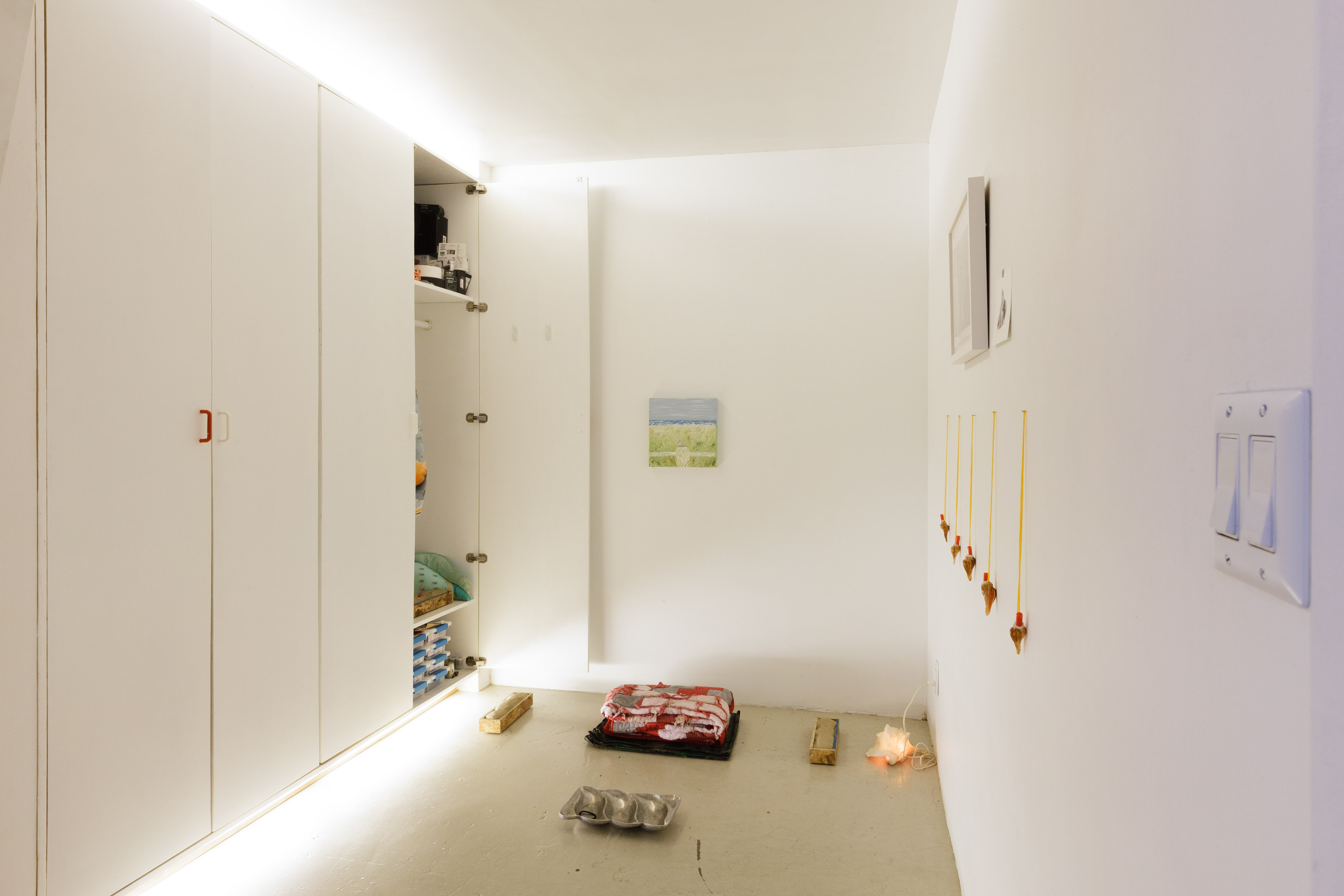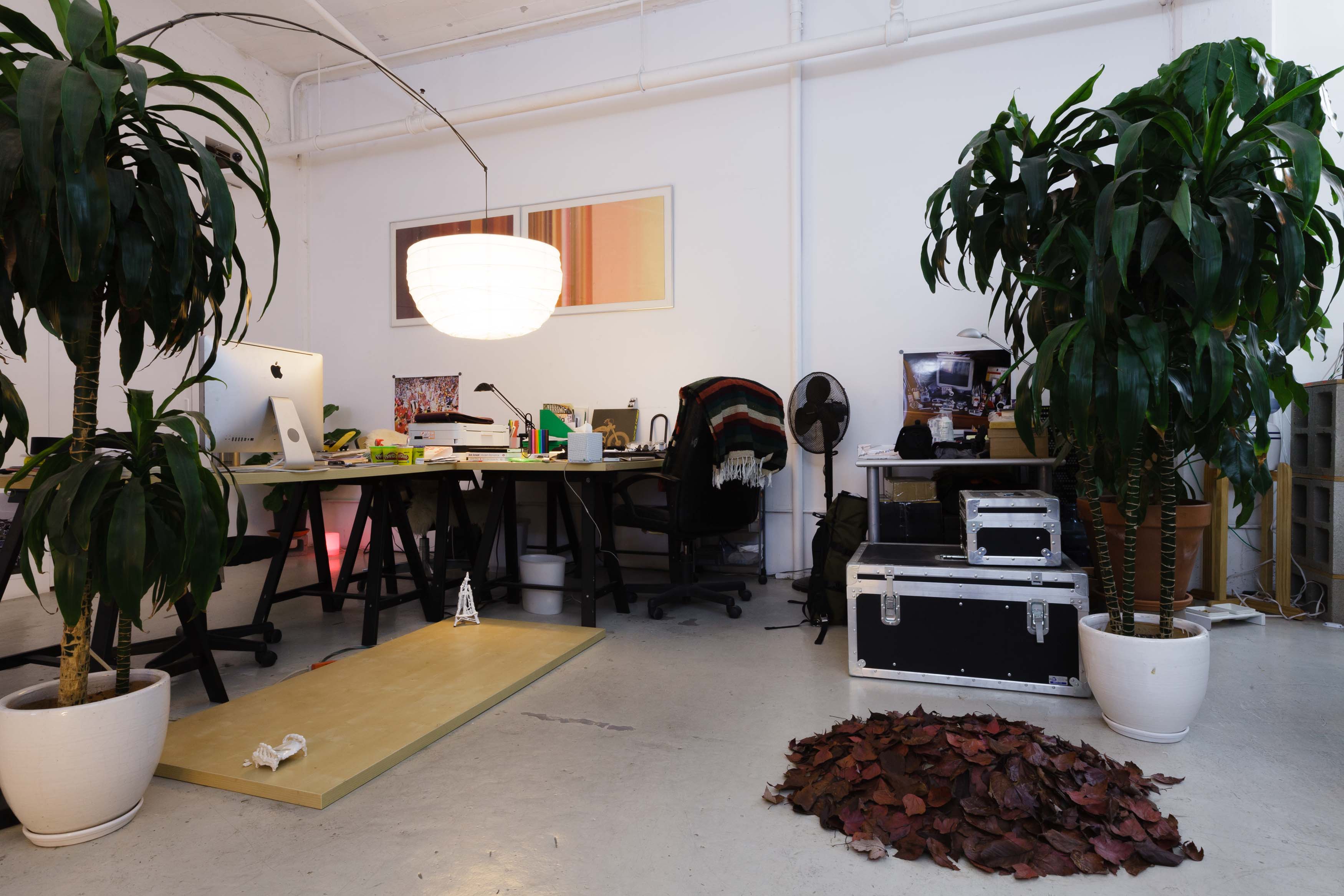sous les pavés, la plage
(beneath the pavement, the beach)
— Paris, 1968
(beneath the pavement, the beach)
— Paris, 1968

Exhibition collateral
 Resort
ResortLos Angeles, California
Nov 12 — Dec 10, 2016
Artists
Miya Ando, Zack Dougherty, Joe Garvey, Cherisse Grey, Osang Gwon, Arthur Hitchcock, Maak Lab, Maia Ruth Lee, Conny Maier, Kazuyuki Matsushita, Alec Recinos, Paul Savovici, Sarah Smiley, Hiroaki Yamane
Audio
Ariel Colin Stark-Benz, Senay Kenfe
To destroy the past and begin anew: this was the central impulse of the avant-garde movements of the twentieth century. Despite its violent tone, it is primarily a desire to restore life to art. The art of the past, the avant-garde believed, was being privileged at the expense of the new. Nowhere was this more apparent than in the museum, an institution dedicated to honoring the eternal importance of the past. The space of a traditional museum exhibition, for example, is intended to be anonymous and neutral. It is an attempt to separate grand, immortal art from the profane material world. In this way, it’s hardly surprising that the futurists, the situationists, and so many other avant-garde movements, compared the museum to a cemetery. In the exhibition space, the artwork appears dead and inert. By abolishing the museum, however, one could shed the baggage of the past, and reduce the gap between art and life.
Of course, without the context of the past, it’s hard to be sure how to proceed. More often than not, as the theorist Boris Groys argues, the avant-garde opted for the gesamtkunstwerk as a new alternative. Introduced by the opera composer Richard Wagner in his 1849 treatise The Art-Work of the Future, the gesamtkunstwerk is the total work of art. It brings together separate fields, entities, and ideas in a unified whole. In Wagner’s operas, this specifically meant synchronizing all of the aspects of the production—art, music, and drama—in perfect harmony, effectively producing a self-contained world. This world, however, is necessarily temporary and finite. Much like the heroes of Wagner’s operas, who so often sacrifice themselves for a greater good, the gesamtkunstwerk finds its end in its dissolution. It is precisely this contingent temporality that makes the gesamtkunstwerk appealing.
While the term initially designated a single work of art, it has since expanded to become more environmental. The gesamtkunstwerk, Groys states, is now best exemplified in the contemporary curatorial project. Unlike a traditional museum exhibition, which separates the artwork from the world in an attempt to render it immortal, the curatorial installation as gesamtkunstwerk acts on both a variety of works—art, processes, documents—and the contingent material space in which they are staged, directly acknowledging its own being in the world. Its goal is precisely to “bring art collections into the flow—to make art fluid, to synchronize it with the flow of time” (Groys).
Galerie Hideout offers a kind of unstable gesamtkunstwerk. Between November 12 and December 10—a defined period of time—the diverse work of fourteen artists is installed throughout an apartment, intermingling with its prior occupants. Here, the space of the exhibition is always, at the same time, the space of life itself. The events of the vernissage and finissage help bring the artworks to the fore, but in between the divide between art and the everyday elides. It is the making of a resort on the beach beneath the street. And like everything built on the sand, it must one day collapse.
Text: Alec Recinos
Of course, without the context of the past, it’s hard to be sure how to proceed. More often than not, as the theorist Boris Groys argues, the avant-garde opted for the gesamtkunstwerk as a new alternative. Introduced by the opera composer Richard Wagner in his 1849 treatise The Art-Work of the Future, the gesamtkunstwerk is the total work of art. It brings together separate fields, entities, and ideas in a unified whole. In Wagner’s operas, this specifically meant synchronizing all of the aspects of the production—art, music, and drama—in perfect harmony, effectively producing a self-contained world. This world, however, is necessarily temporary and finite. Much like the heroes of Wagner’s operas, who so often sacrifice themselves for a greater good, the gesamtkunstwerk finds its end in its dissolution. It is precisely this contingent temporality that makes the gesamtkunstwerk appealing.
While the term initially designated a single work of art, it has since expanded to become more environmental. The gesamtkunstwerk, Groys states, is now best exemplified in the contemporary curatorial project. Unlike a traditional museum exhibition, which separates the artwork from the world in an attempt to render it immortal, the curatorial installation as gesamtkunstwerk acts on both a variety of works—art, processes, documents—and the contingent material space in which they are staged, directly acknowledging its own being in the world. Its goal is precisely to “bring art collections into the flow—to make art fluid, to synchronize it with the flow of time” (Groys).
Galerie Hideout offers a kind of unstable gesamtkunstwerk. Between November 12 and December 10—a defined period of time—the diverse work of fourteen artists is installed throughout an apartment, intermingling with its prior occupants. Here, the space of the exhibition is always, at the same time, the space of life itself. The events of the vernissage and finissage help bring the artworks to the fore, but in between the divide between art and the everyday elides. It is the making of a resort on the beach beneath the street. And like everything built on the sand, it must one day collapse.
Text: Alec Recinos
Special thanks
Karla Aguiñiga, Dan Garland, Jimmy Le, Thuong Le, Ken Mishima, Duy Nguyen, Steven Rodriguez, Van Dung Tran
Press
© 2013 - 2023 Galerie Hideout. All Rights Reserved.








